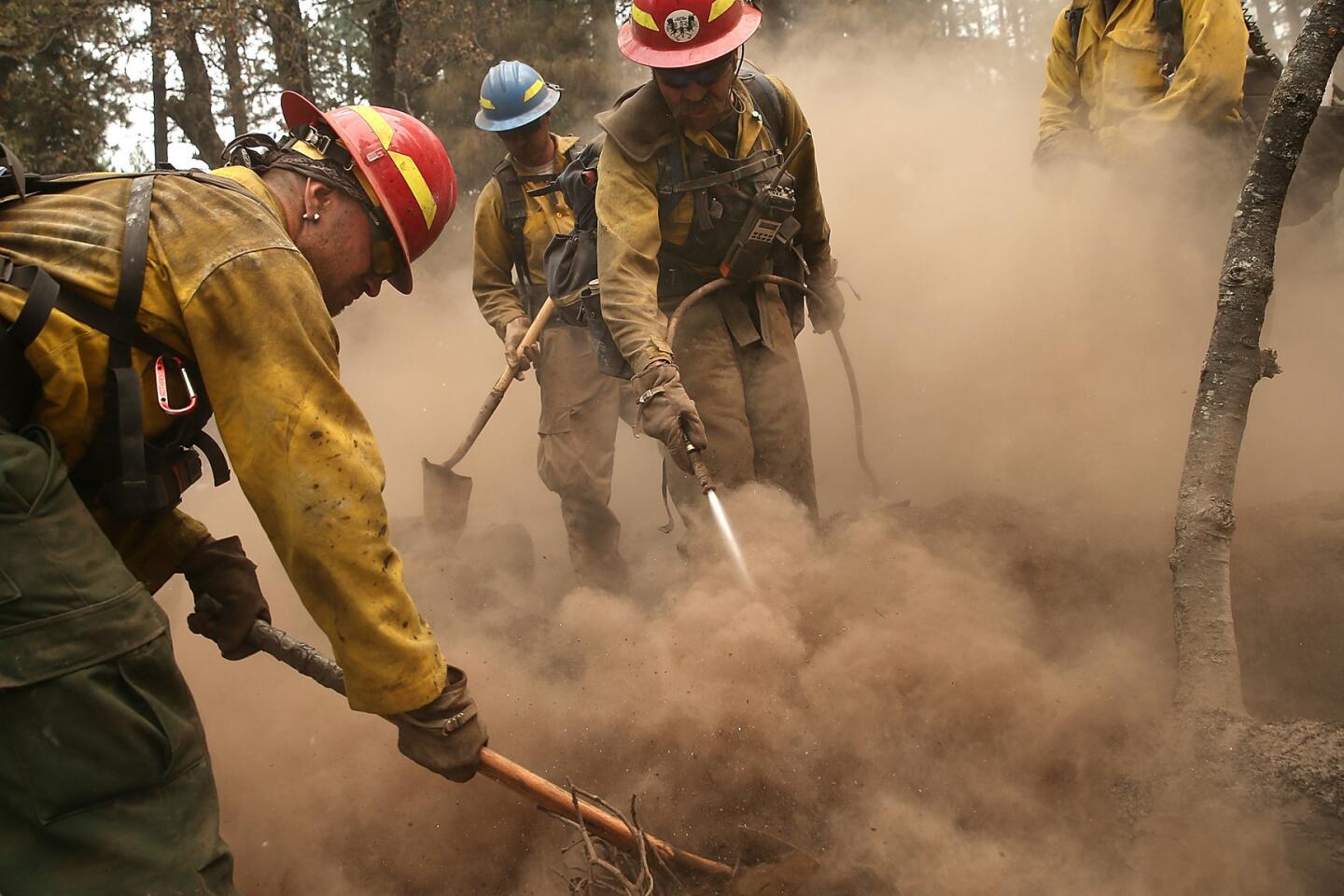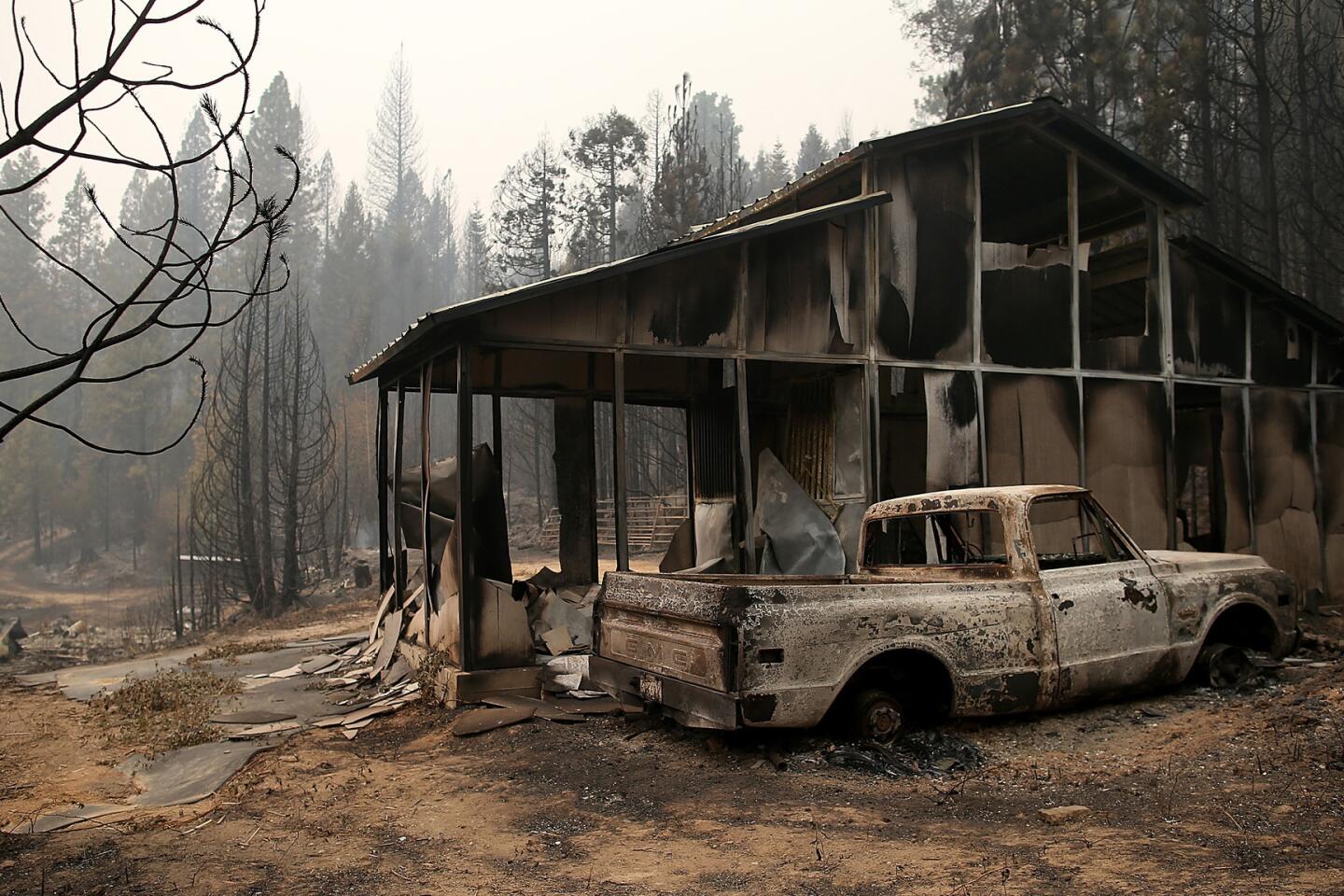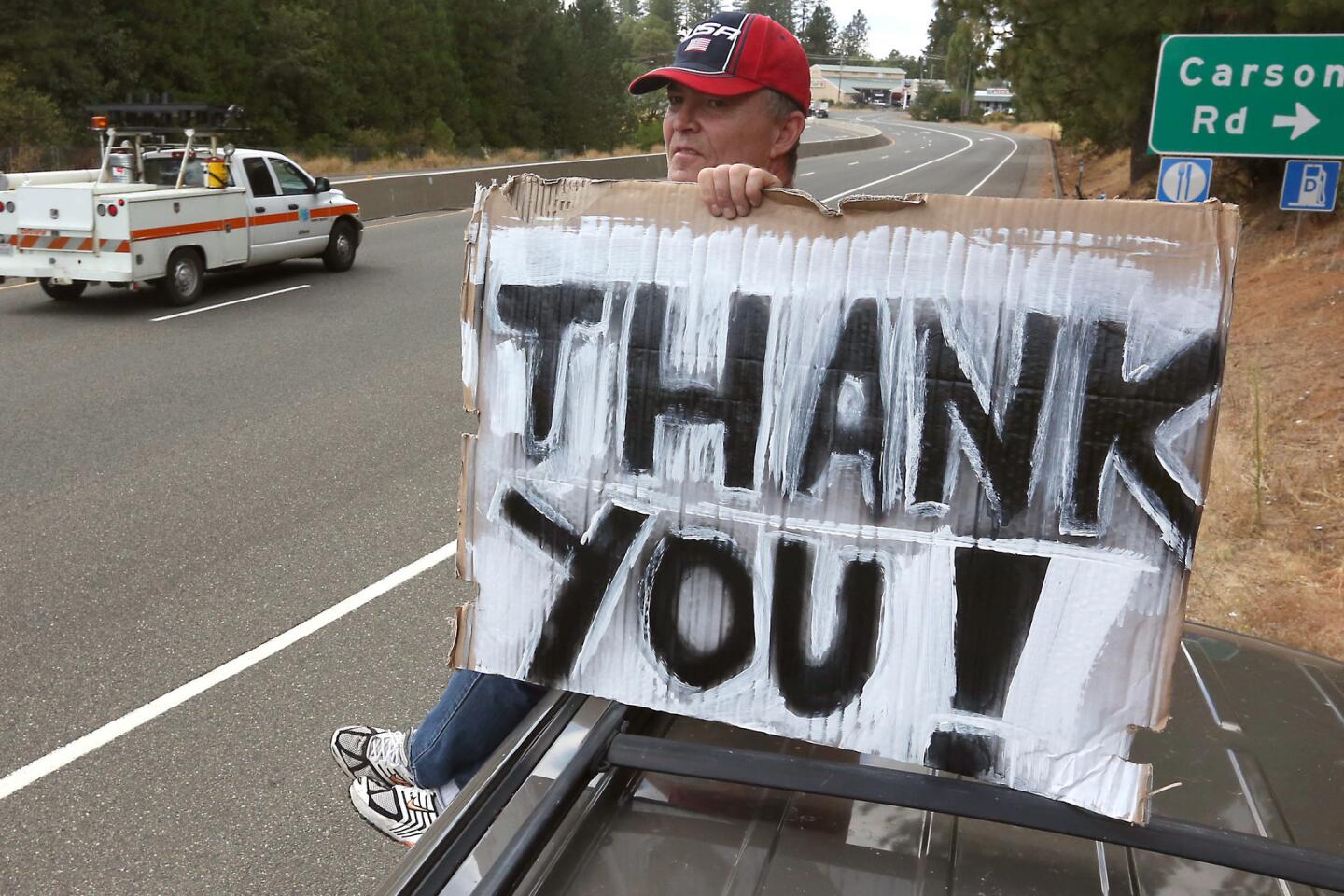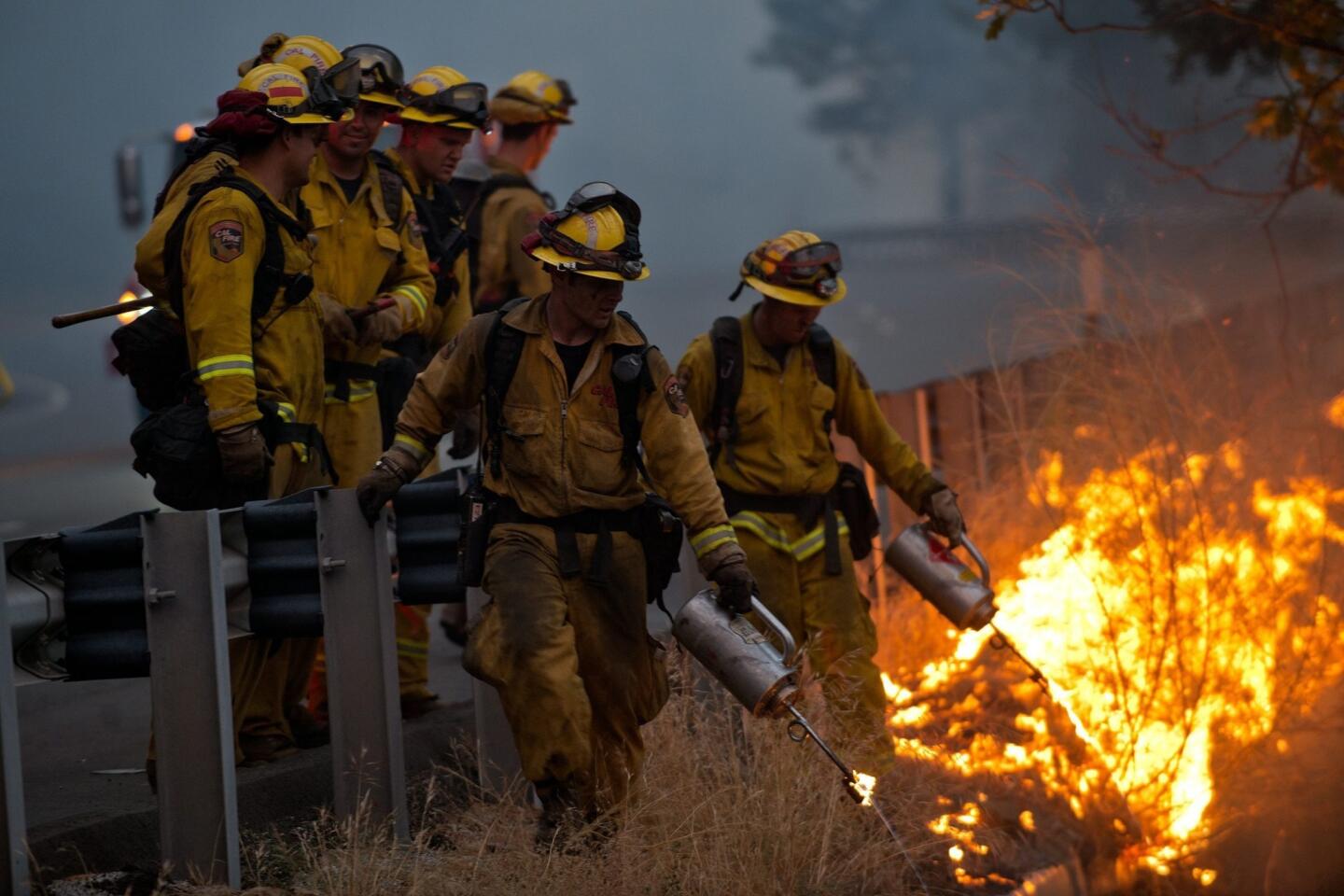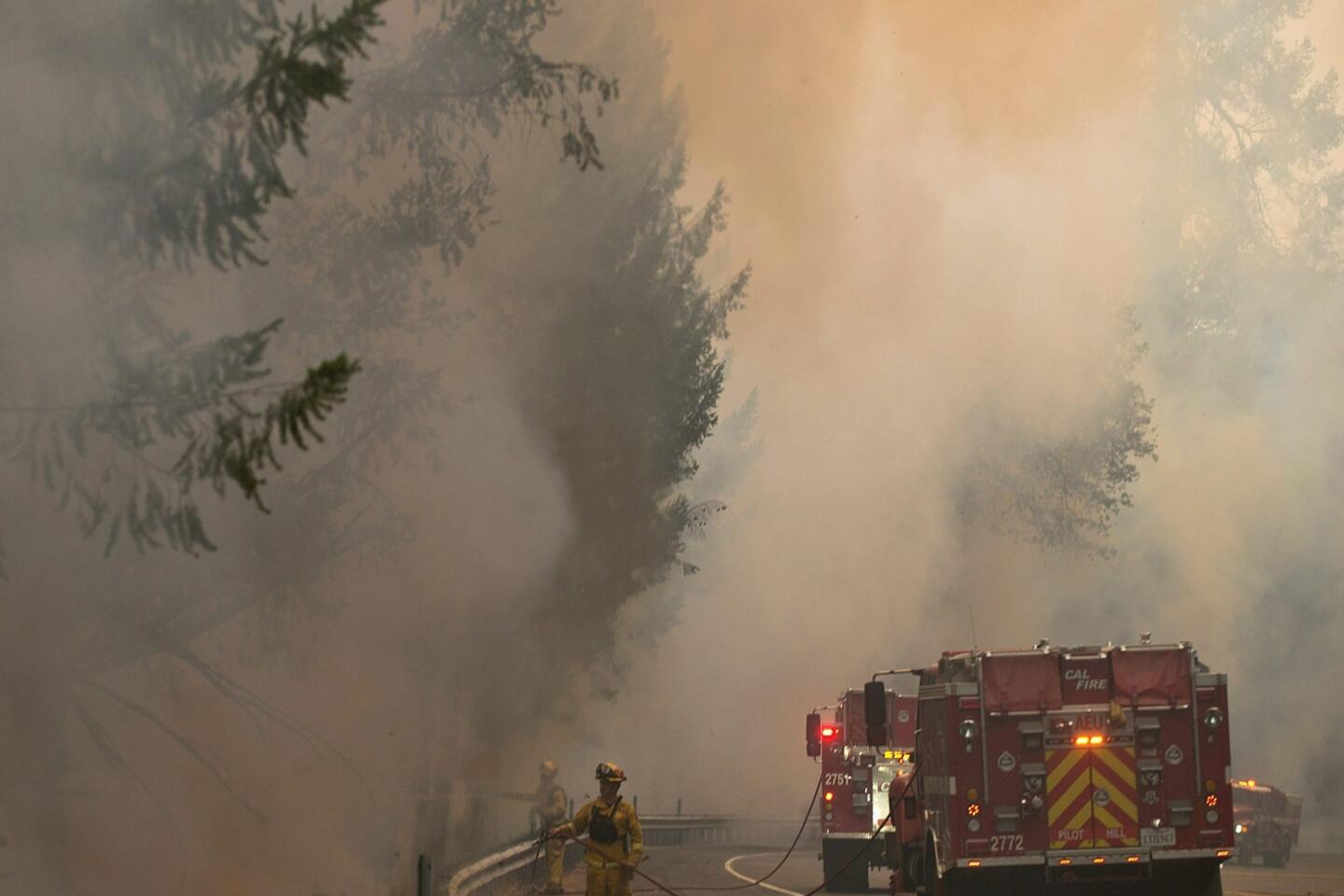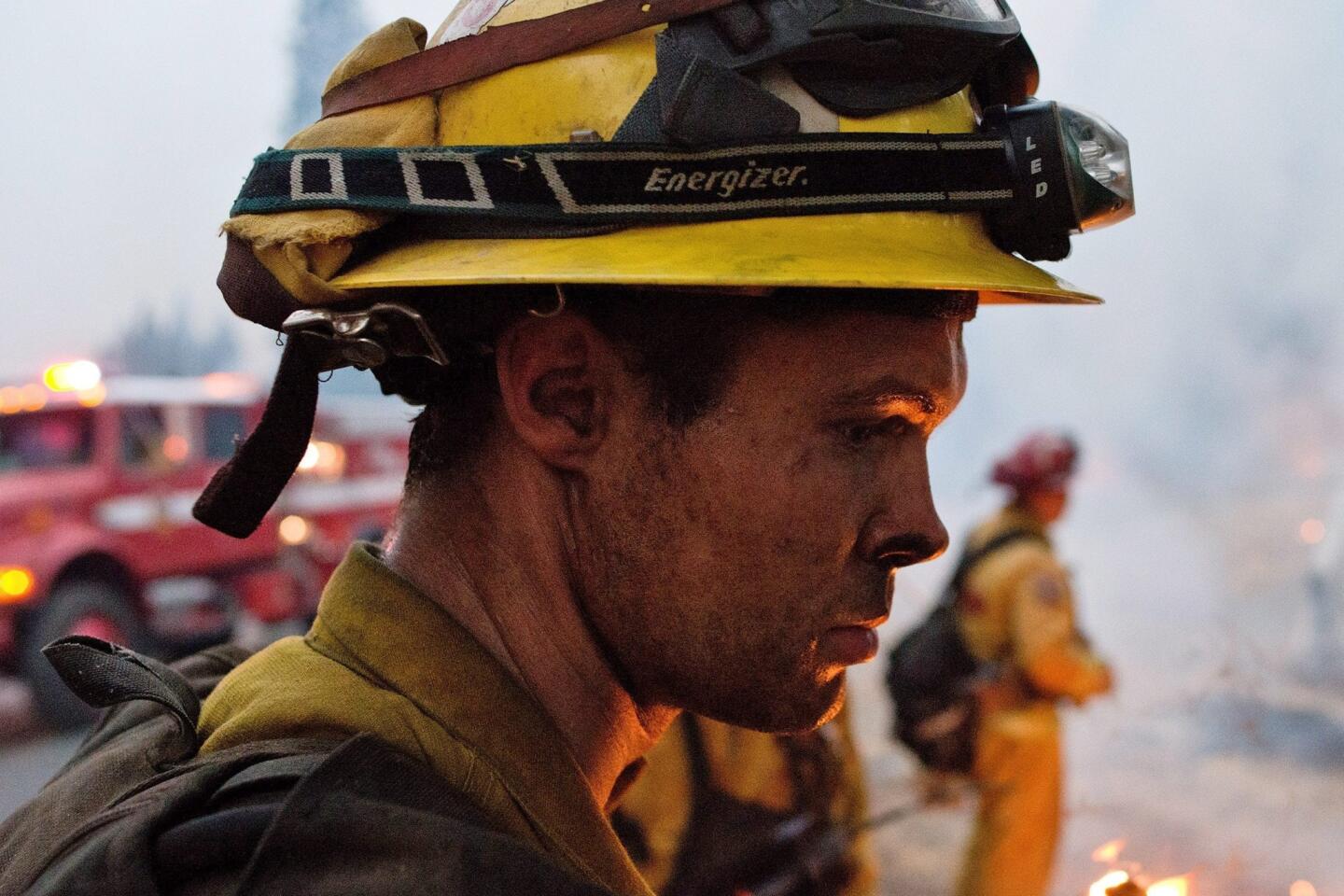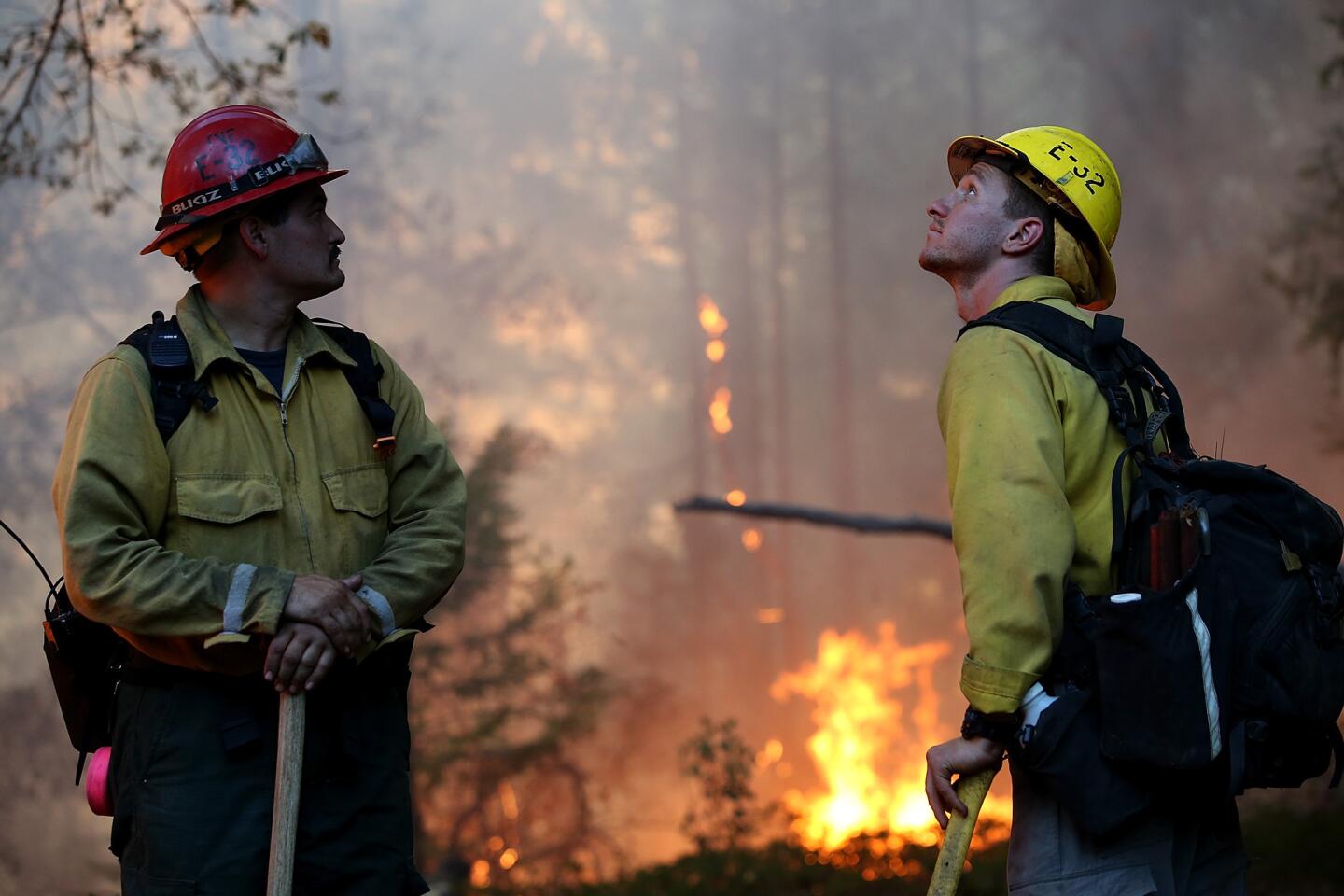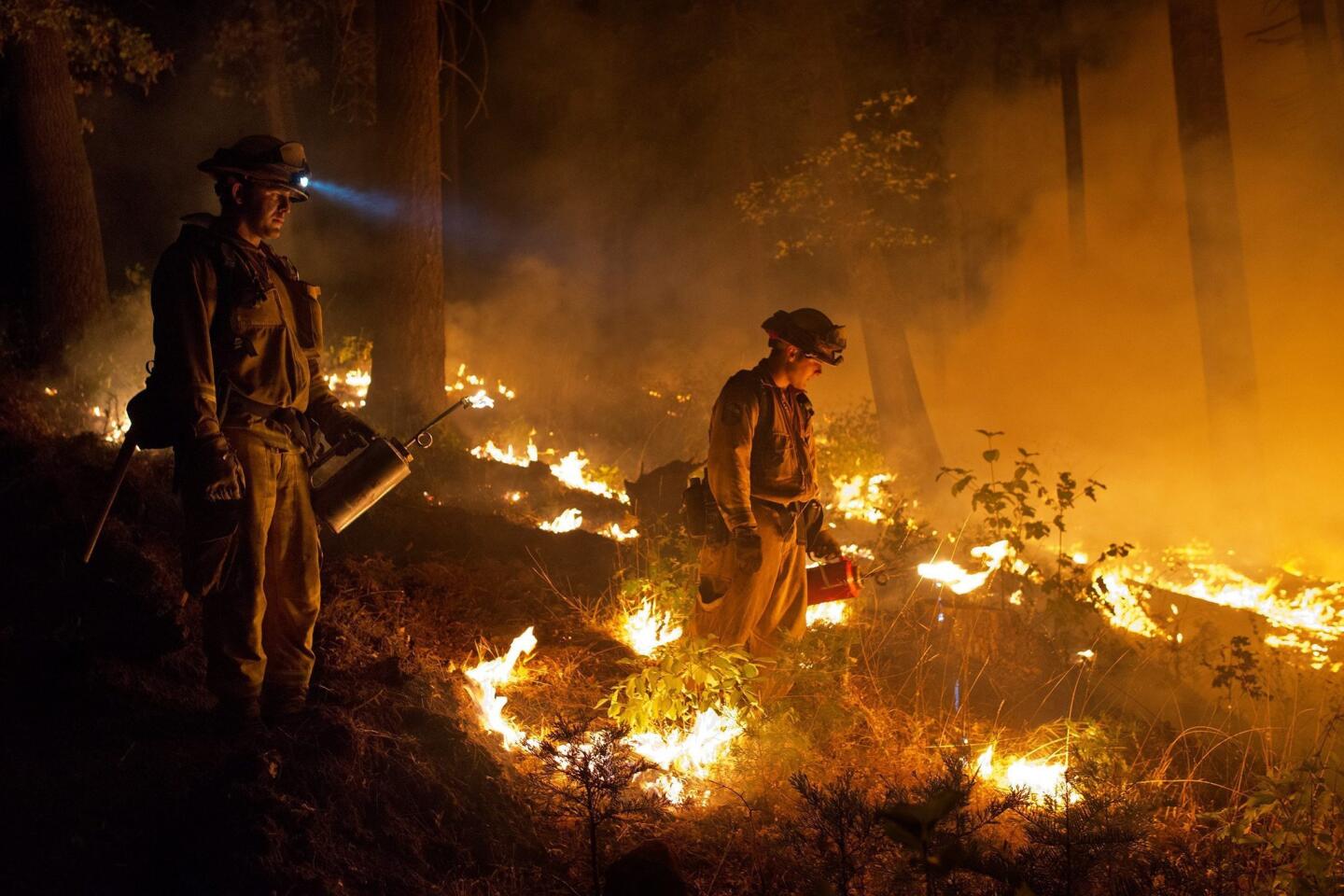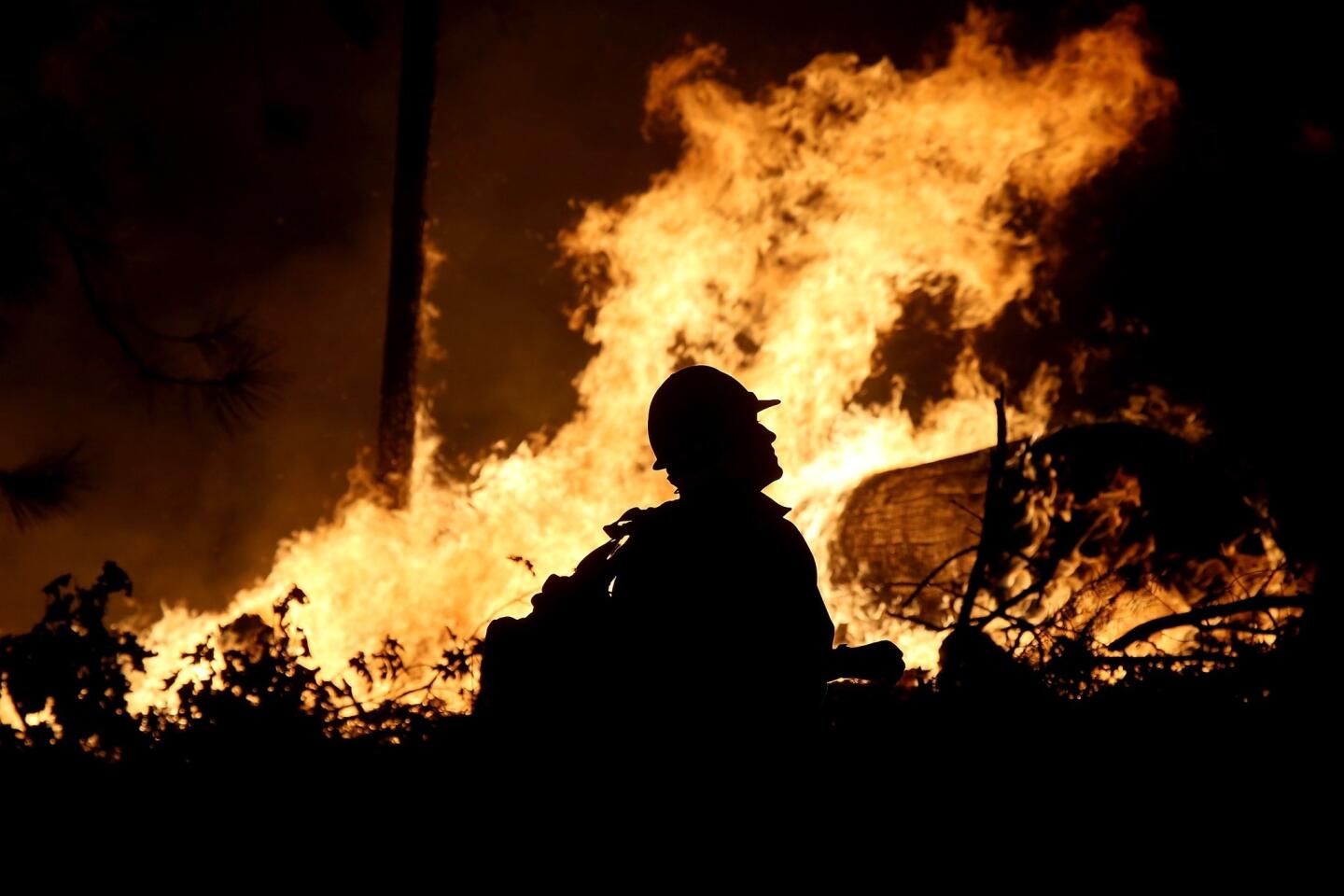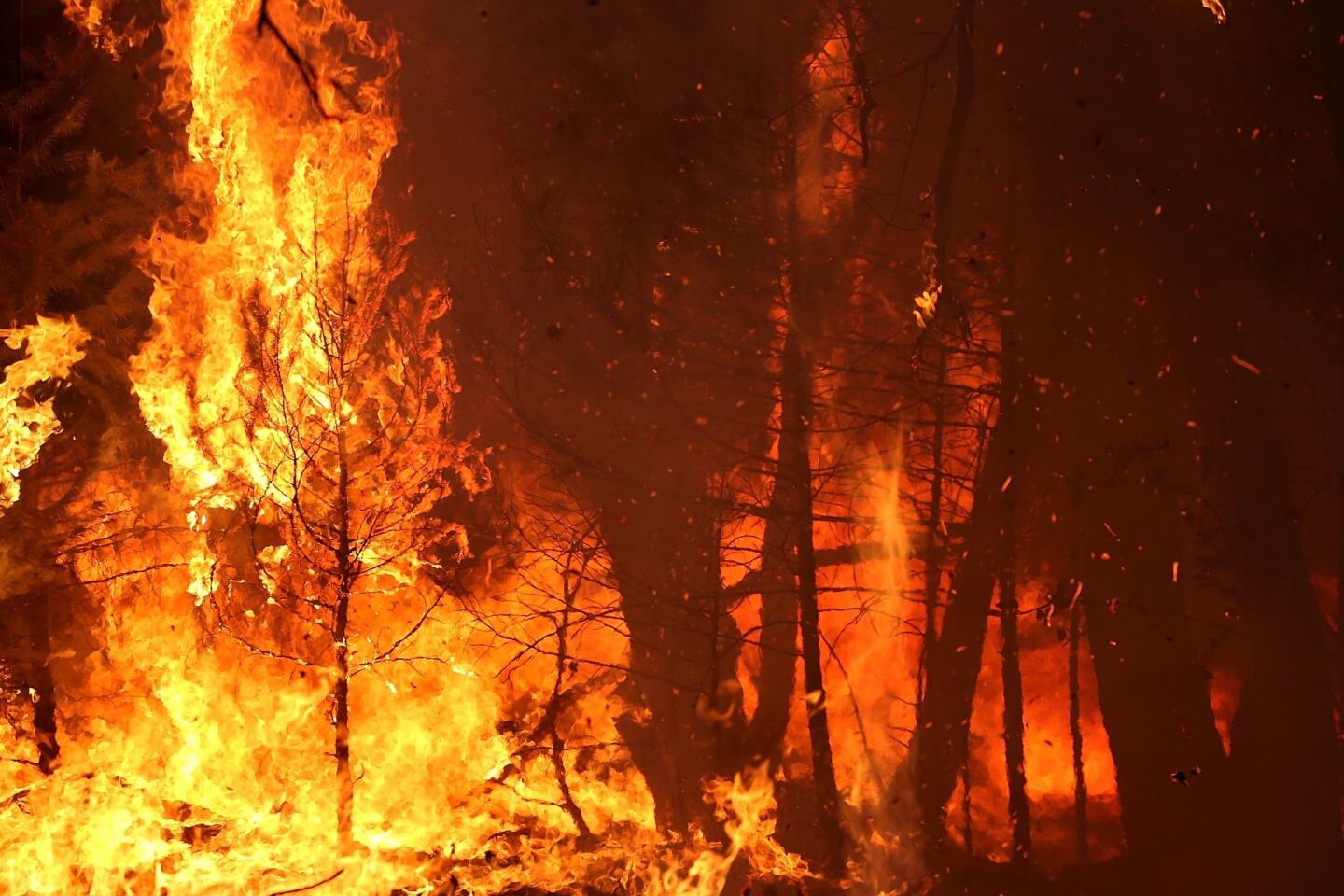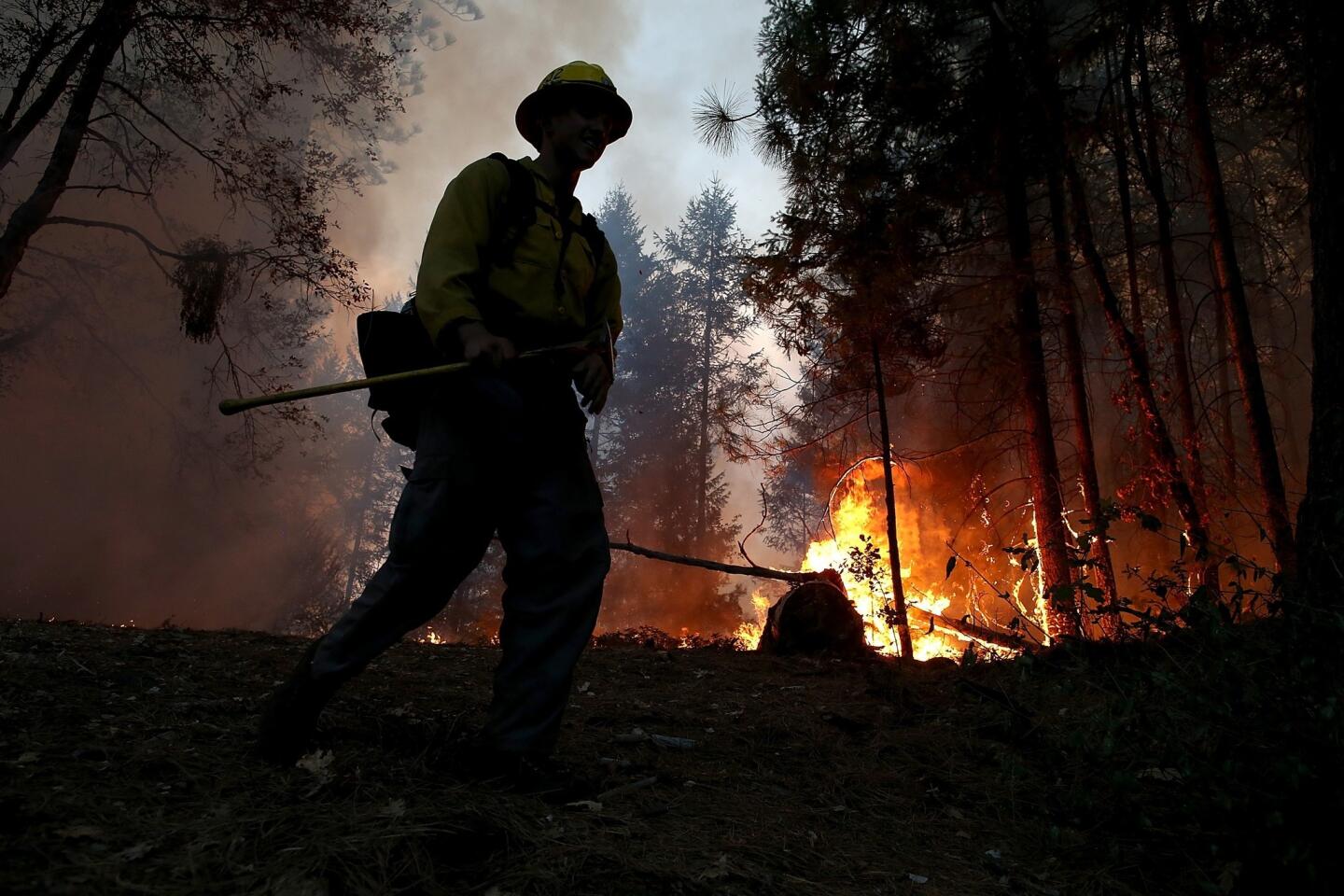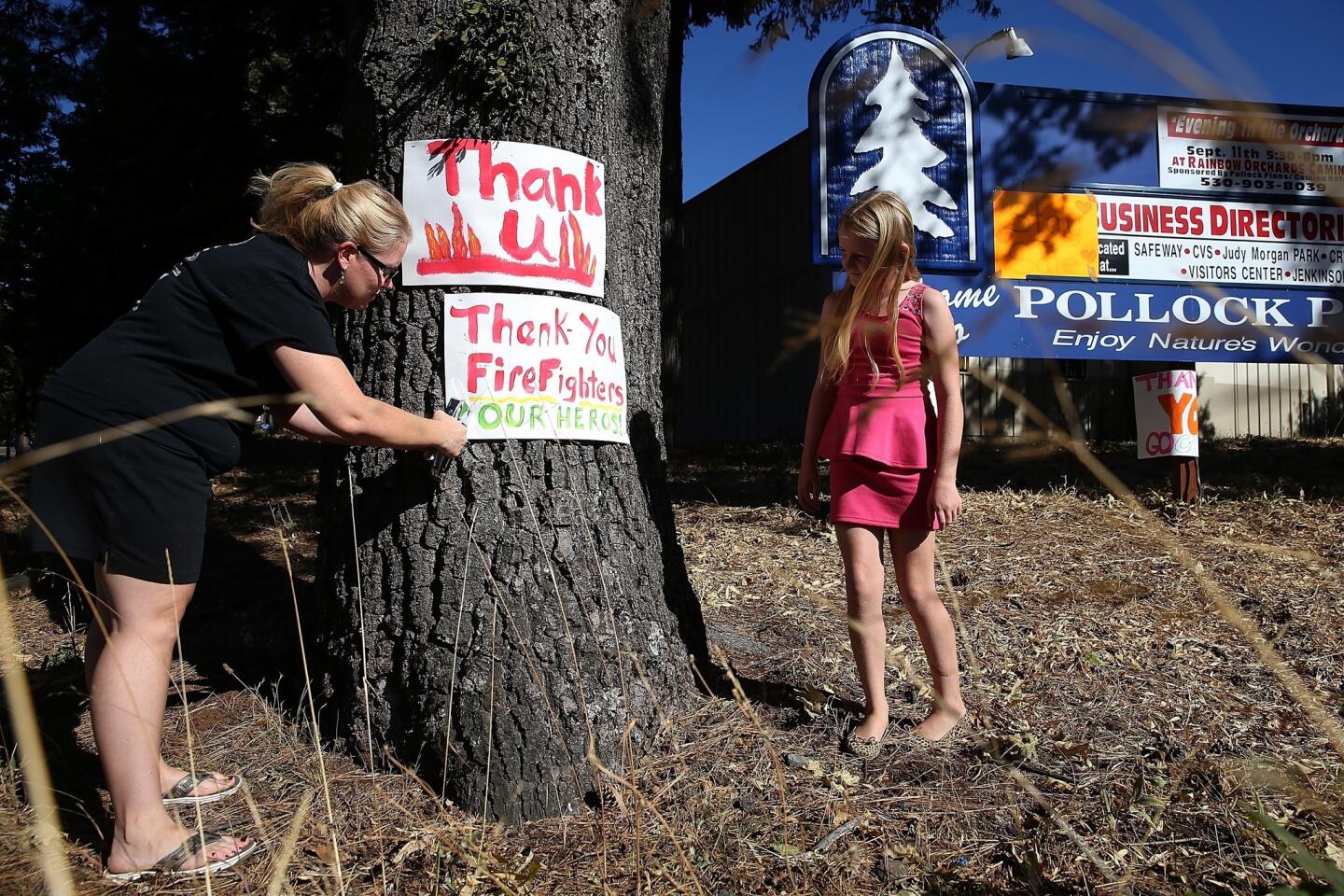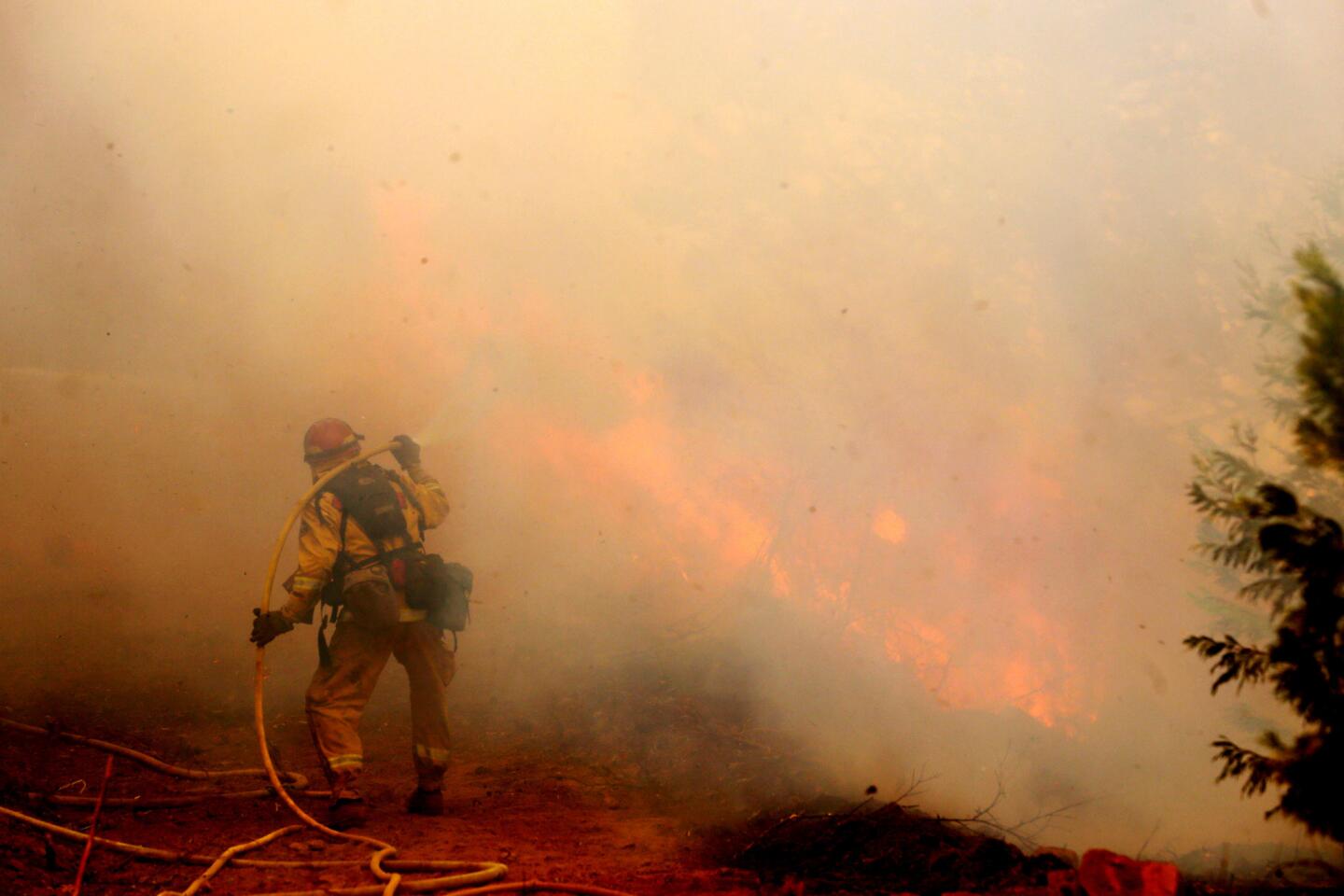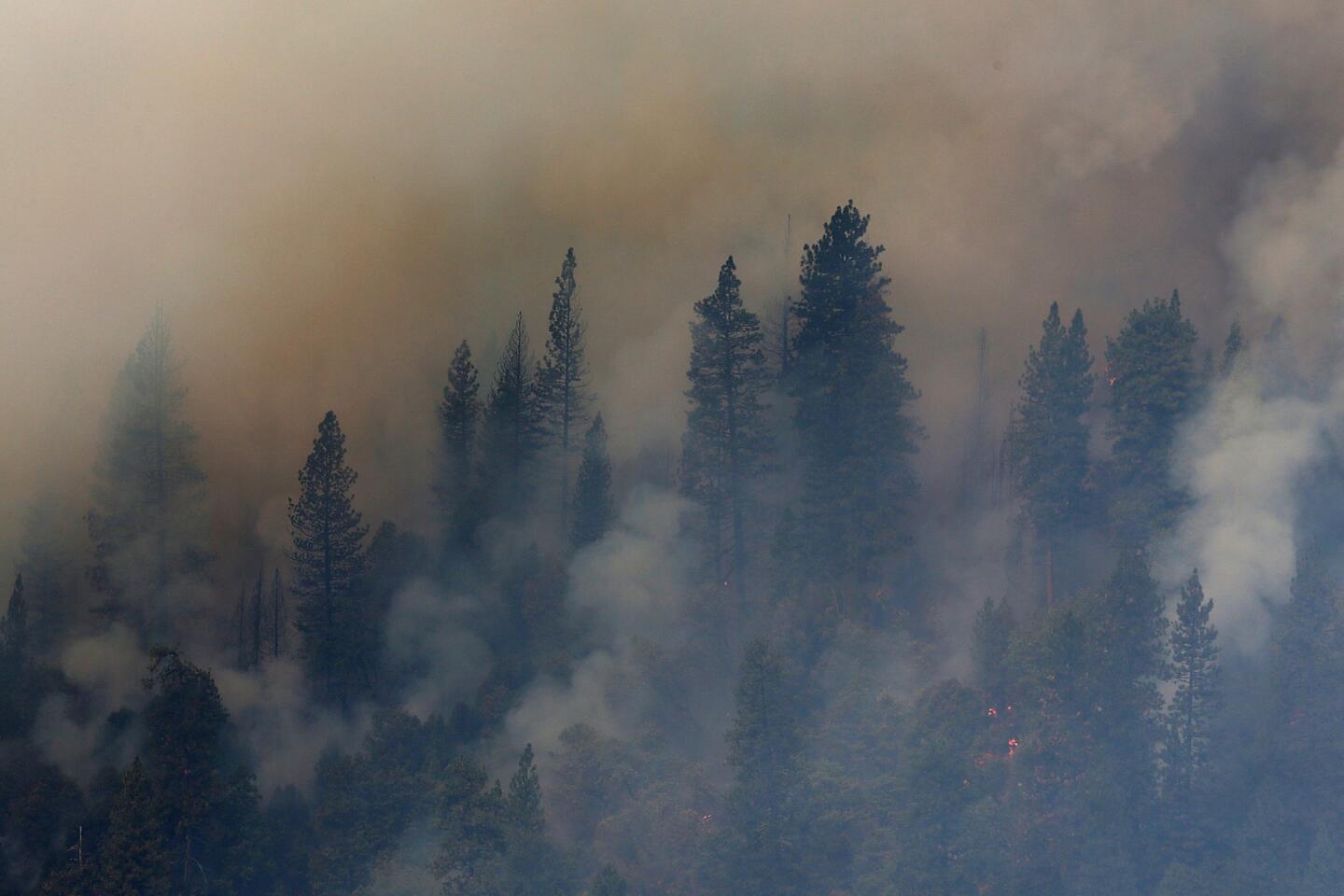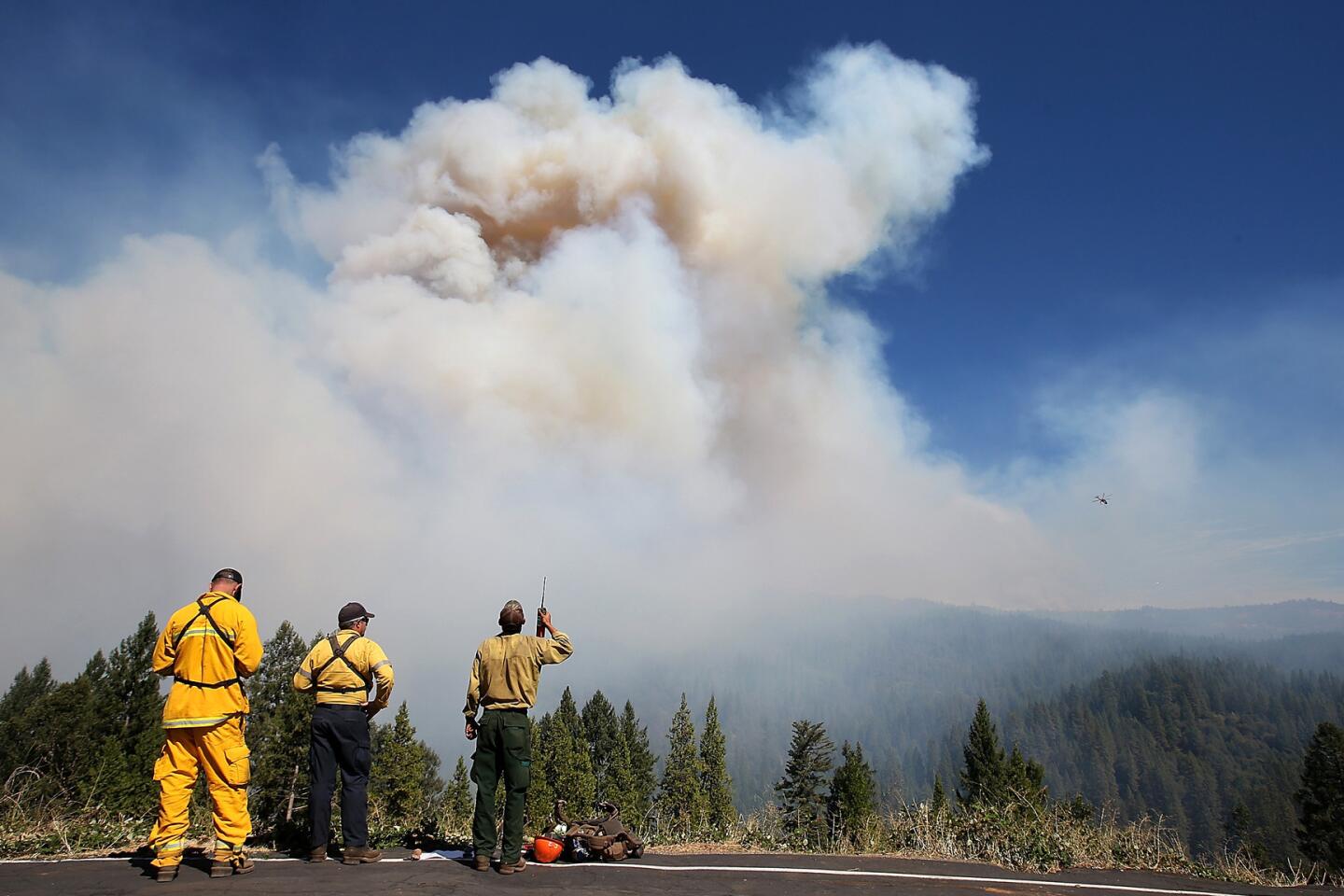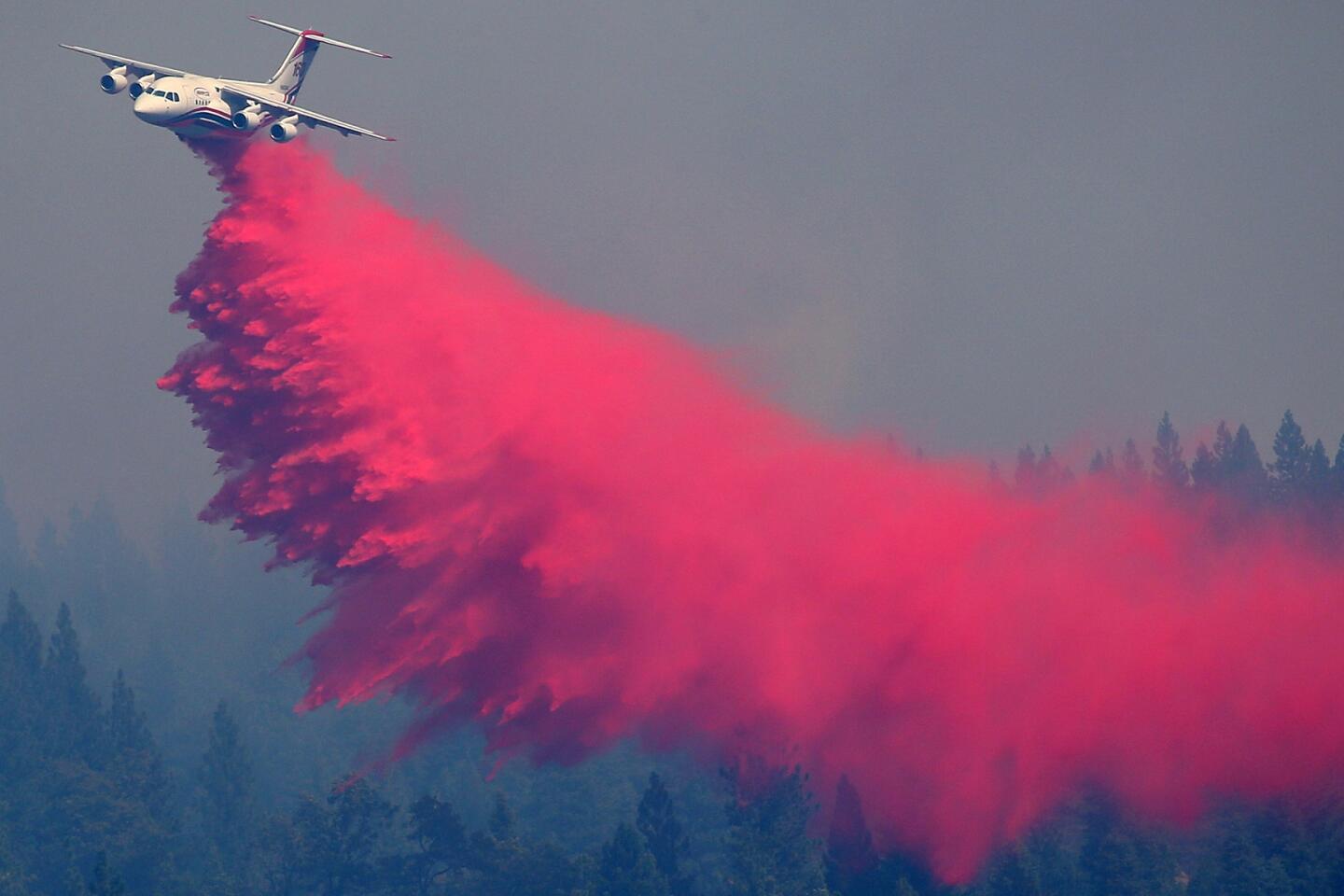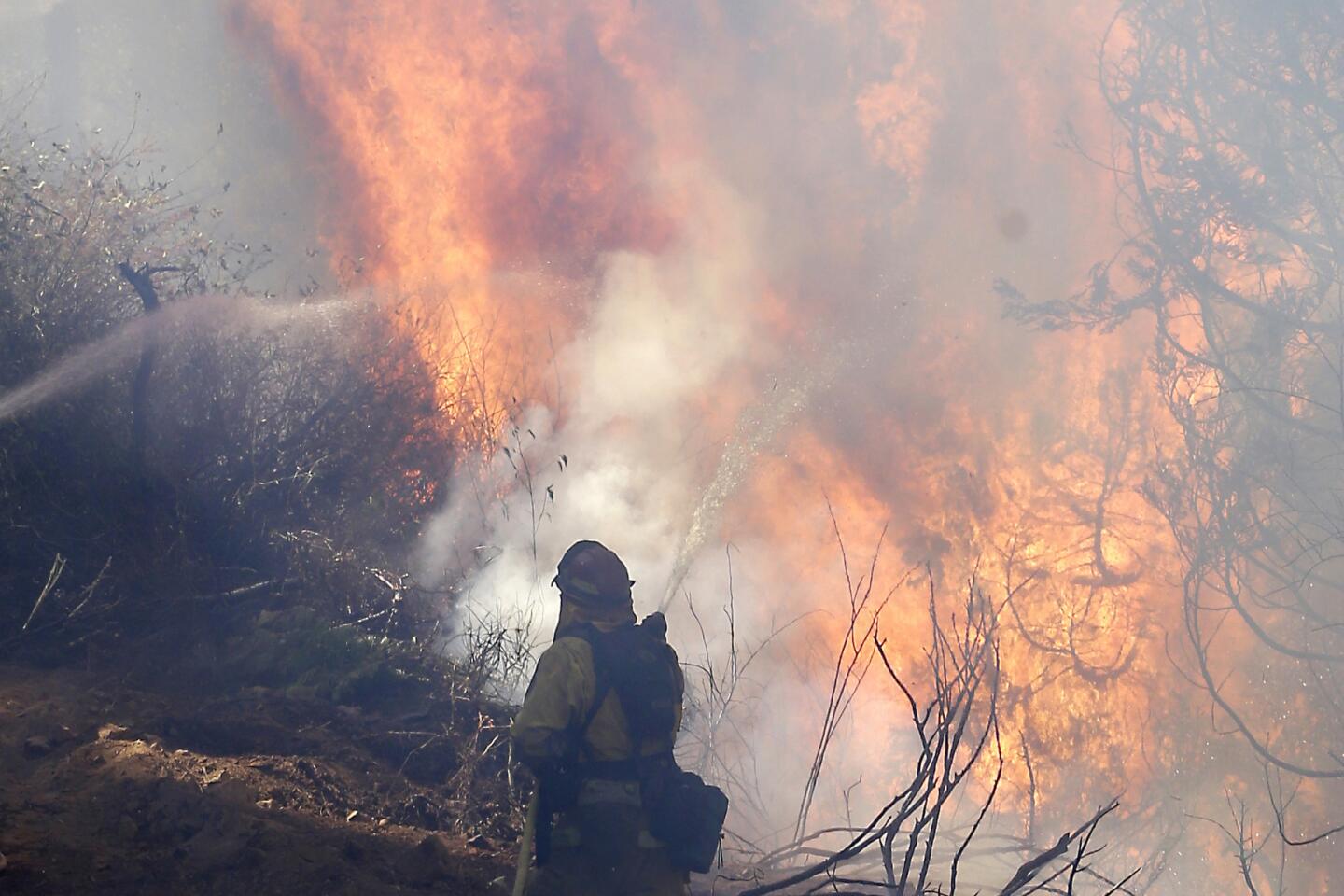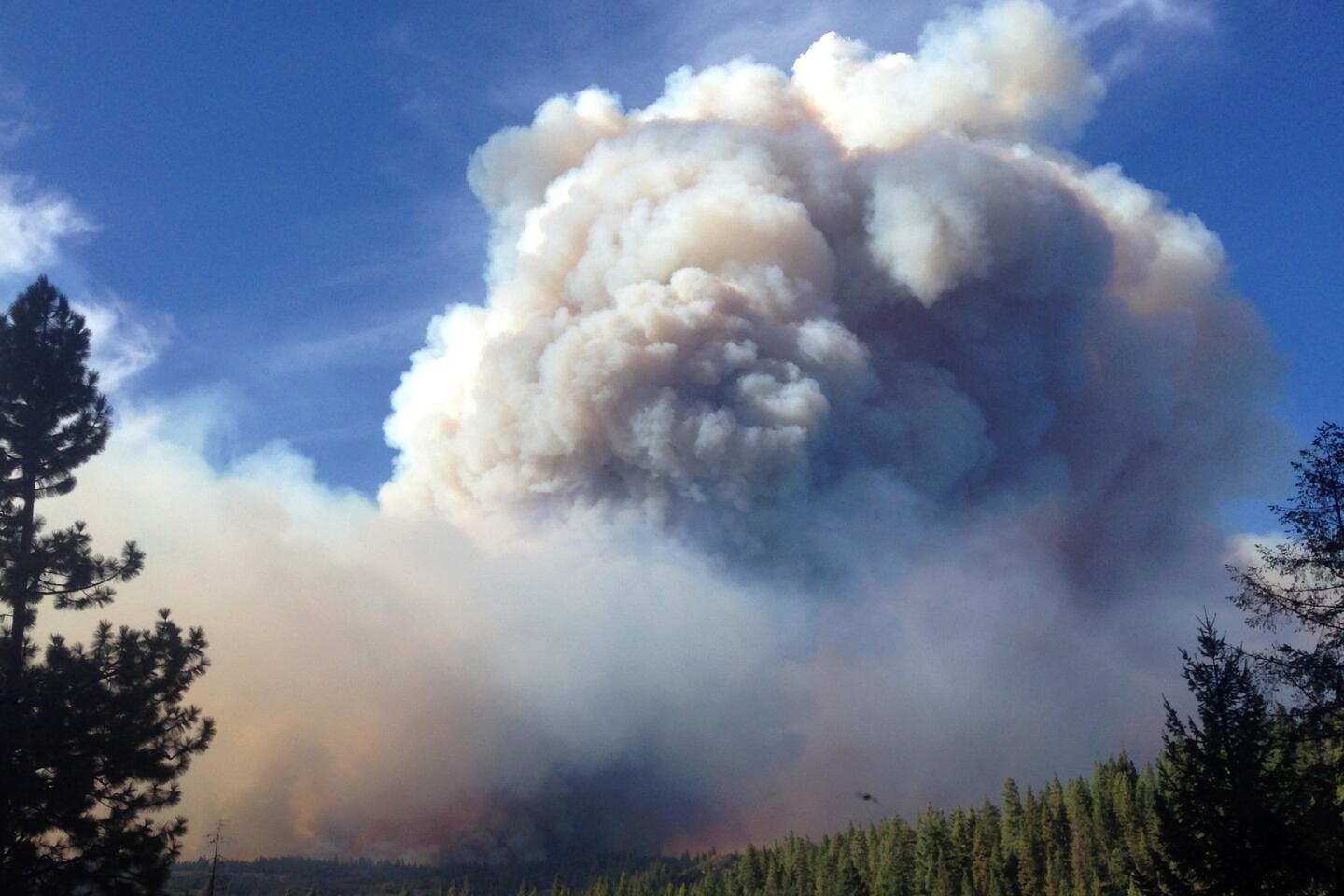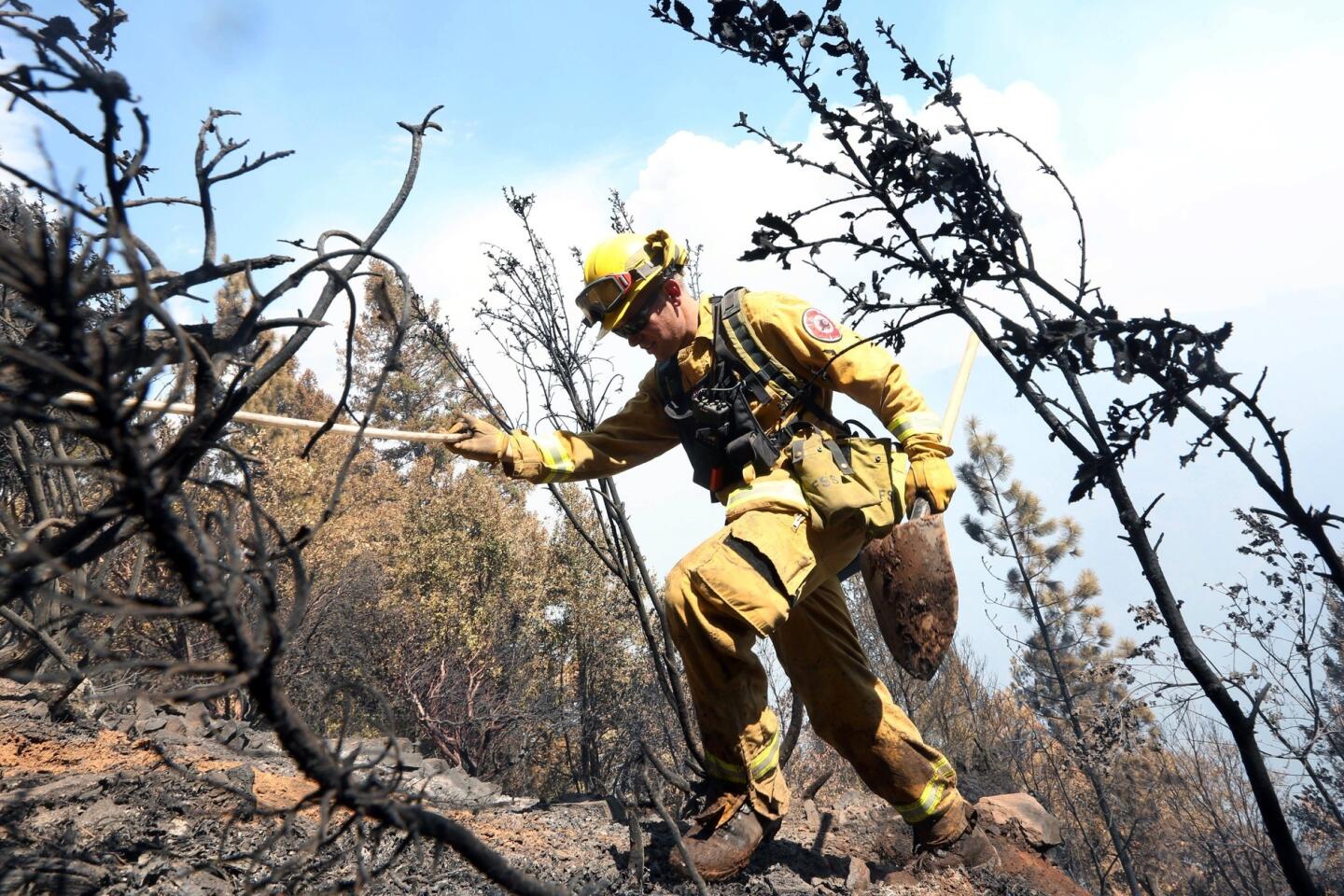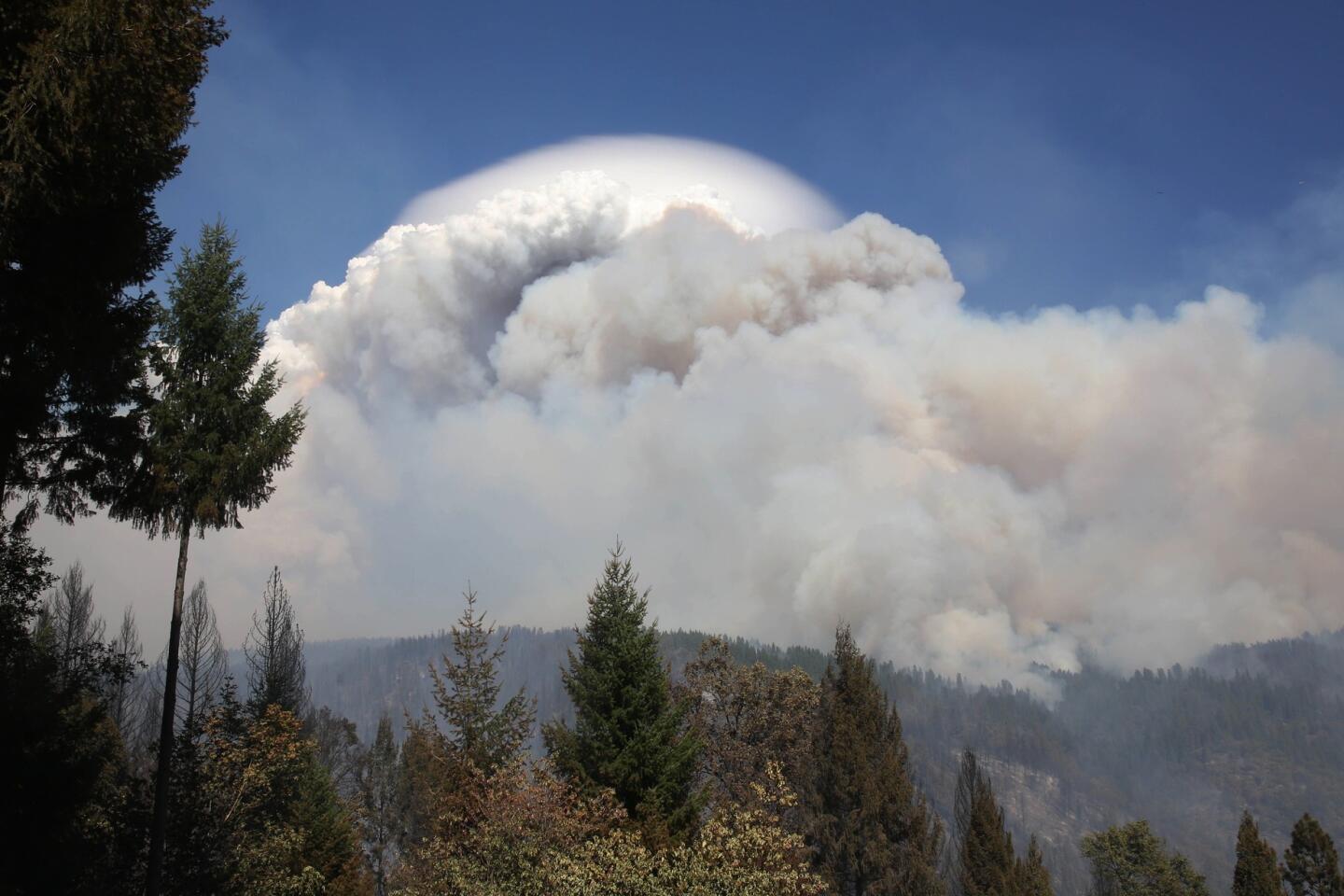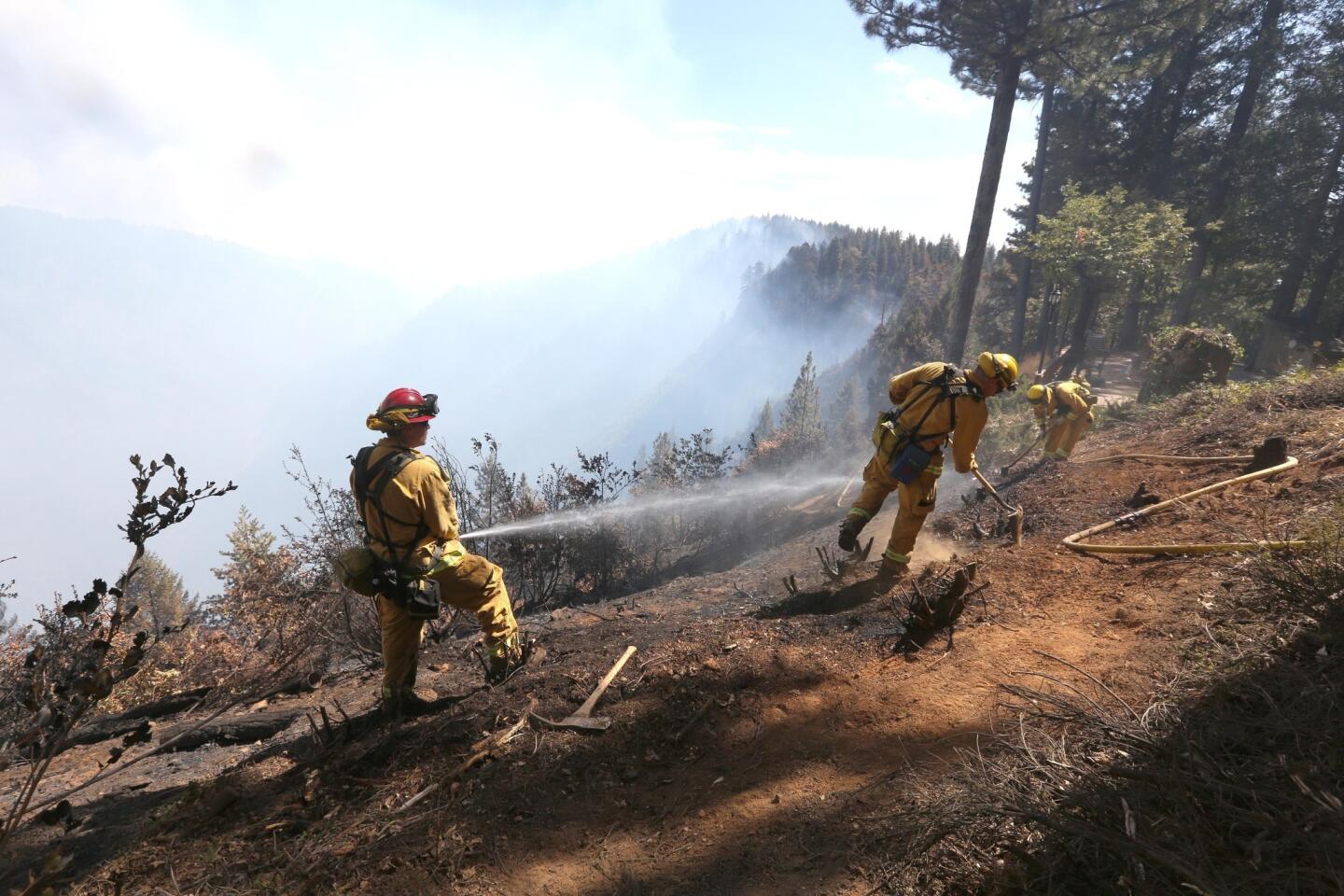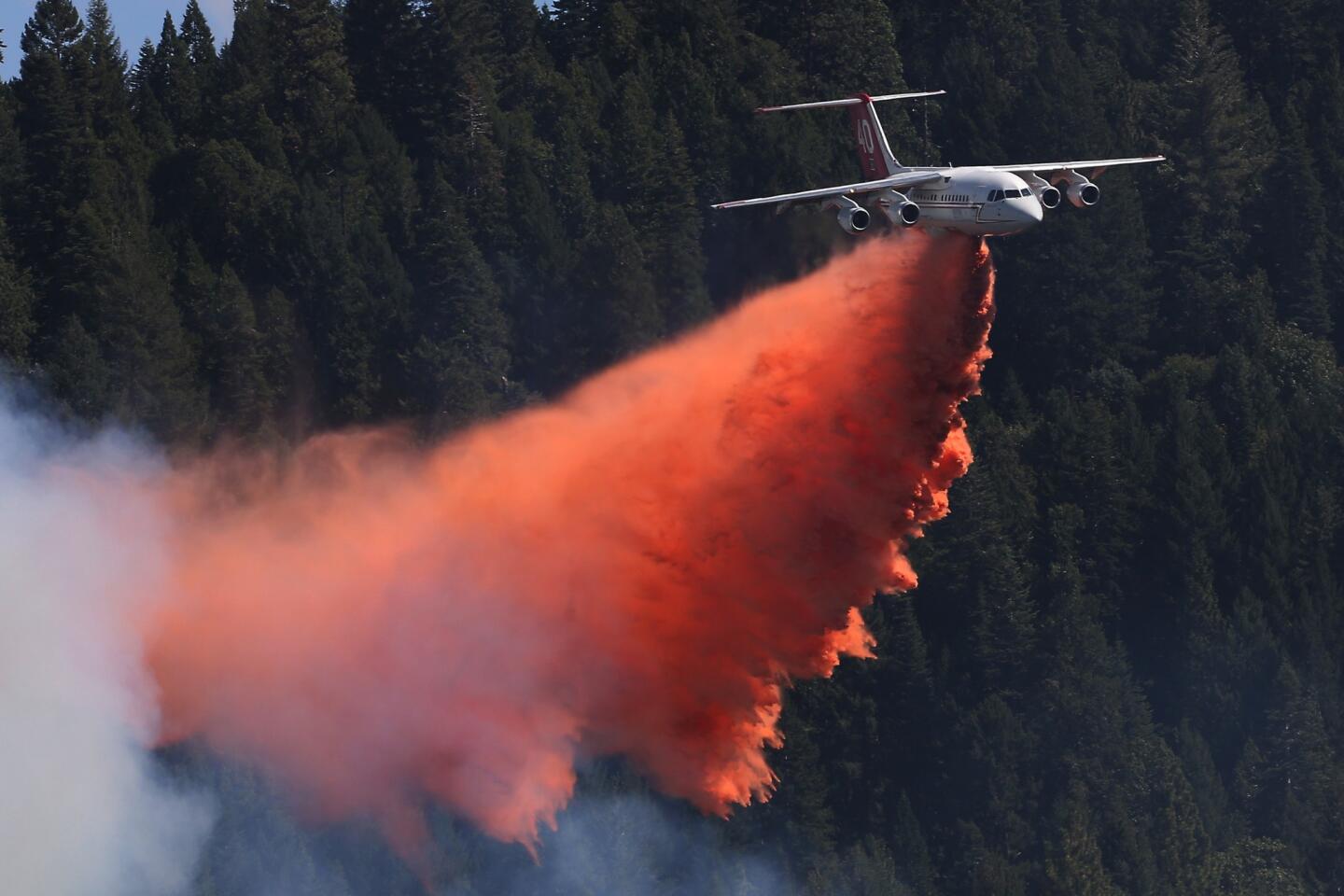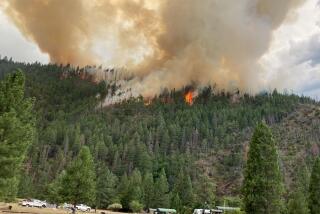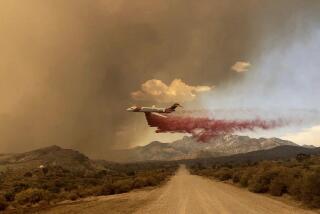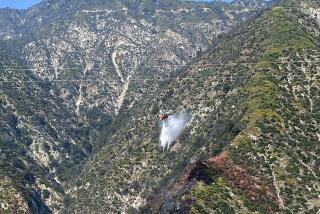Massive Northern California fire outrunning firefighters
In a summer of destructive blazes across Central and Northern California, the King fire — burning out of control in the forest east of Sacramento — has officials particularly alarmed.
The fire exploded in a matter of hours into the second-largest in California this year, forcing the closure of Highway 50 and moving north toward Tahoe National Forest.
The arson fire has produced a massive smoke plume the length of Colorado and is pushing embers across canyons, reservoirs and rivers, outracing thousands of firefighters trying to control it.
The King fire is the latest in a series of major blazes to roar out of control in vegetation left tinder-dry by California’s three-year drought. On Monday, 150 structures were lost in the logging town of Weed, just west of Mt. Shasta, when a wildfire swept through. A fire destroyed 30 homes a day earlier in Madera County.
“These times are unprecedented here in California with respect to fire behavior,” California Department of Forestry and Fire Protection Unit Chief Mike Kaslin said Thursday.
More than 4,000 firefighters have been assigned to battle the King fire. They have pumped more than 450,000 gallons fire retardant out of Sacramento so far, dropping 210,000 gallons on Wednesday alone to battle the fast-moving blaze.
“We’re literally setting a world record with respect to retardant drops and use on this fire,” Kaslin said.
Extreme and erratic conditions forced a dozen firefighters to run for a safe zone, where they deployed their fire shelters to protect themselves from oncoming flames. All 12 were evacuated safely by helicopter, Kaslin said.
Authorities said they arrested a Pollock Pines man in Placerville suspected of setting the fire. Wayne Huntsman, 37, was booked late Wednesday on suspicion of arson and is being held in lieu of $10-million bail.
Officials did not elaborate on how the fire was started, citing the ongoing investigation.
The fire, only 5% contained, grew overnight Wednesday from 27,930 to nearly 80,000 acres across the Eldorado National Forest. More than 12,000 homes are under threat, and 3,000 people have been evacuated.
Officials said it now costs $5 million a day to fight the fire.
Flames prompted the closure of Highway 50 from Pollock Pines to Riverton, affecting travelers headed to Lake Tahoe from Sacramento. Some fire officials were concerned that the fire could reach as far north as Interstate 80, a major route for travelers heading from the Bay Area to Nevada.
North Lake Tahoe fire officials said Thursday there was no immediate threat to the Lake Tahoe Basin, but asked residents and visitors to have a evacuation plan.
In the early stages, firefighters had trouble reaching the blaze, which was burning in a steep, rugged canyon of the South Fork of the American River just north of Pollock Pines.
The blaze, which began Saturday, quickly raced through the rugged canyon, consuming thirsty trees and brittle vegetation that the drought had dried into kindle. Firefighters, hampered by darkness, changing wind directions and steep terrain, were unable to directly observe the blaze.
The drought had been drying out what once had been lush and unscorched for two decades — a possible reason why the fire has been moving so rapidly, officials said. Flames are raging through parts of the Eldorado National Forest that haven’t seen a significant fire since the Cleveland fire in 1992, which burned roughly 22,500 acres.
With those conditions, the fire rapidly ran 15 miles north, scorching thousands of acres overnight.
“It grew so significantly that we had active spotting that was out ahead of the fire by approximately three miles,” moving into Placer County, Kaslin said.
The fire prompted Gov. Jerry Brown on Wednesday to declare a state of emergency for El Dorado County. The Federal Emergency Management Agency granted a corresponding request for aid that can cover up to 75% of the state’s costs to fight the fire.
Fire season has slowly subsided in other parts of the country, officials said, and fighting California fires are the primary focus now, with multiple local, state and federal agencies putting all available resources into the effort.
veronica.rocha@latimes.com
Twitter: @veronicarochaLAhttps://twitter.com/veronicarochala
rosanna.xia@latimes.com
Twitter: @rosannaxiahttps://twitter.com/rosannaxia
More to Read
Start your day right
Sign up for Essential California for news, features and recommendations from the L.A. Times and beyond in your inbox six days a week.
You may occasionally receive promotional content from the Los Angeles Times.
